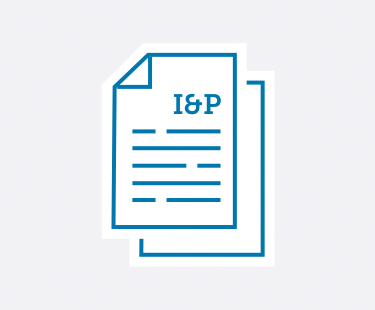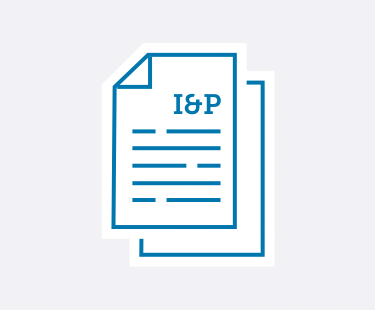

Learn practical strategies to handle emerging trends and leadership challenges in private schools.
No matter if you’re a School Head, Admission Director, Development Director, Board member, or any other private school administrator—Ideas & Perspectives®, ISM’s premier private school publication, has strategic solutions for the pervasive problems you face.
- Tuition not keeping pace with your expenses? In I&P, explore how to use strategic financial planning to create your budget and appropriately adjust your tuition.
- Enrollment dropping off? Discover how to implement the right admission and enrollment management strategies that engage your community—and fill your classrooms.
- Trouble retaining teachers? Learn how you can best support your teachers using ISM’s Comprehensive Faculty Development framework. Your faculty members will become more enthusiastic about their roles—which ultimately improves student outcomes.
- Fundraising campaigns not as successful as you’d hoped? Implement ISM’s practical advice and guidance to build a thriving annual fund, construct an effective capital campaign, and secure major donors—no matter your community size or location.
- Not sure how to provide professional development—for you and your staff? Learn ways to develop and fund a successful professional development strategy. You can improve teacher-centered satisfaction and growth, which in turn strengthens student-centered learning.
- Problematic schedule? You can master the challenges of scheduling with the help of ISM’s practical advice, based on our experience with hundreds of schools and our time-tested theories.
- And so much more.
I&P has shared targeted research, up-to-date insight, and sound theory with school leaders since 1975. More than 8,500 private school decision-makers find the answers to their schools’ administrative and governance matters in our advisory letter. We give you the strategic answers you need.
As an ISM Silver or Gold member, you not only receive issues online and in print 10 times a year, but you have access to 900+ articles in our web archive. Need help? It’s at your fingertips! Learn more and sign up for ISM's membership here.
Search
See the articles from our latest issue of Ideas & Perspectives.
Chart the Attendance at Board and Committee Meetings
Volume 37 No. 5 // April 13, 2012
Whatever type of school you serve as Board President—country day school, academy, parent cooperative, Montessori, religiously affiliated—governance is based on volunteer commitment.
1. Already a member? Click here to login.
2. Not a member? Click here to become a member.
3. Not sure? We'll help you figure it out.
The Student Culture Profile II
Volume 37 No. 5 // April 13, 2012
In the 2010–11 school year, ISM conducted a one-year partial replication—using a stronger research design and a more exacting statistic—of itsoriginal six-year International Model Schools Project, a research project that focused on student performance, satisfaction, and enthusiasm. The results of the 2010–11 project, titled the ISM Student Experience Study (SES), have been published by ISM in its complete form as a “white paper” in January 2012, and summarized in Ideas & Perspectives in Vol. 37, No. 4. The following article, featuring one of the instruments derived from the SES findings, is designed to be read in the context of either of those two documents. Readers are asked to take note of the fact that the Student Culture Profile II, shown in this article, supersedes ISM’s original Student Culture Profile. Unlike the original, it is designed to be administered directly to private-independent school students, grades five and higher. (The original instrument was designed to be administered by a third-party professional interviewer, rather than administered directly to the students.)
1. Already a member? Click here to login.
2. Not a member? Click here to become a member.
3. Not sure? We'll help you figure it out.
Child Abuse Law and Mandatory Reporting Procedures
Volume 37 No. 5 // April 13, 2012
The Department of Health and Human Services reported that, in 2009, Child Protective Services (CPS) agencies investigated allegations of maltreatment of 3.6 million children. Of the cases determined: 78.3% were victims of substantiated neglect; 717.8%, victims of physical abuse; 79.5%, victims of sexual abuse; and 77.6%, victims of psychological maltreatment. There were an estimated 1,770 known deaths as a result of abuse or neglect in 2009.1
1. Already a member? Click here to login.
2. Not a member? Click here to become a member.
3. Not sure? We'll help you figure it out.
Research Outcomes: The ISM Student Experience Study
Volume 37 No. 4 // March 22, 2012
The ISM International Model Schools Project ran for six years, from 1989 to 1995, and entailed ISM on-site data collection expeditions—usually three per year—to eight to nine private-independent schools annually. The project focused upon relevant factors in student performance, satisfaction, and enthusiasm, and, secondarily, on teacher performance, satisfaction, and enthusiasm. In the school year 2010–11, ISM conducted a one-year partial replication of the original project. The full research report was released in January 2012.1 The following article is a summary of that report’s central points and findings.
1. Already a member? Click here to login.
2. Not a member? Click here to become a member.
3. Not sure? We'll help you figure it out.
Look Beyond Your Traditional Marketing Allies
Volume 37 No. 4 // March 22, 2012
As an Admission Director, you have developed an effective relationship with a variety of people and institutions that direct potential families to your school. Feeder schools, Admission Directors at noncompeting schools,1 day care centers, Chambers of Commerce and local service groups (e.g., the Rotary Club, Kiwanis, Lions Club), and churches and synagogues are among the sources of new families and students. You have invested time and effort in getting to know the directors of these institutions and educating them about your school’s unique programs and strengths. These marketing allies have become valuable in your school’s recruiting efforts.
1. Already a member? Click here to login.
2. Not a member? Click here to become a member.
3. Not sure? We'll help you figure it out.
Elements of a Sound Investment Policy
Volume 37 No. 3 // March 5, 2012
Responsible stewardship of your school’s investment funds resides in a clearly articulated and regularly monitored investment policy. This responsibility is the same whether you have a modest endowment or one that would rival that of a major college or university. The investment policy consists of two distinct aspects—an endowment policy and a treasury policy. The endowment policy concerns long-term investment strategies and policies. The treasury policy articulates the investment parameters for funds that you invest for only short periods of time to cover operating and capital needs. The short-term investment or treasury policy should focus on providing sufficient liquidity and safety for operating cash while maximizing yield.
1. Already a member? Click here to login.
2. Not a member? Click here to become a member.
3. Not sure? We'll help you figure it out.
The Fair Labor Standards Act: Getting Overtime Right
Volume 37 No. 3 // March 5, 2012
Scene: The Development Office secretary often works late setting up evening meetings or assisting at after-hours events. During a budget crunch, the School Head decides to put her “on salary” and stops paying overtime. When you receive a letter from the Department of Labor (DOL) a few weeks later, notifying you of an investigation into the school’s overtime pay practices, you wonder, “Could this be what triggered the investigation?”
1. Already a member? Click here to login.
2. Not a member? Click here to become a member.
3. Not sure? We'll help you figure it out.
When the Board President Is the Problem
Volume 37 No. 3 // March 5, 2012
The reasons a Board of Trustees proves ineffective are many and varied. But what if you, an “ordinary” Board member, assess the situation and conclude that the Board President is the source of the problem?
1. Already a member? Click here to login.
2. Not a member? Click here to become a member.
3. Not sure? We'll help you figure it out.
Aegis Academy Faculty Evaluation Sample
Volume 37 No. 2 // February 16, 2012
The following represents a sample evaluation—including commentary on each section and subsection—for a faculty member at our fictional K–12 coed day school, Aegis Academy.
1. Already a member? Click here to login.
2. Not a member? Click here to become a member.
3. Not sure? We'll help you figure it out.
A 21st Century Teacher Evaluation Model
Volume 37 No. 2 // February 16, 2012
As outlined in a recent issue of I&P, ISM recommends addressing your school’s employment-related interactions with faculty—hiring, evaluation, corrective action, etc.—as part of a Comprehensive Faculty Development approach. A portion of this system is the school’s Evaluation and Growth Cycle, which itself is comprised of several interrelated activities. This issue zeroes in on the evaluation process, offering a new teacher evaluation model for 21st Century Schools.
1. Already a member? Click here to login.
2. Not a member? Click here to become a member.
3. Not sure? We'll help you figure it out.


